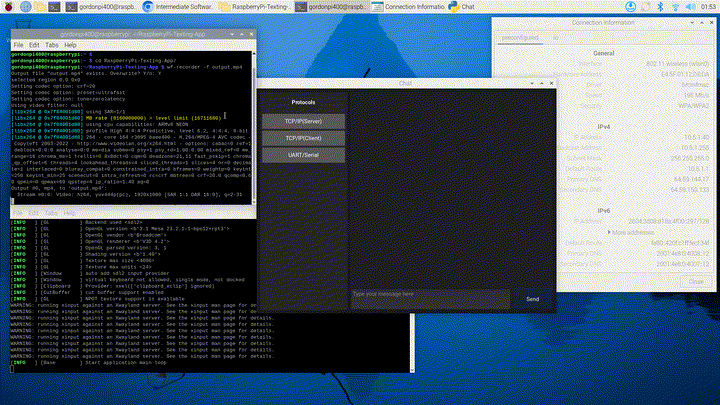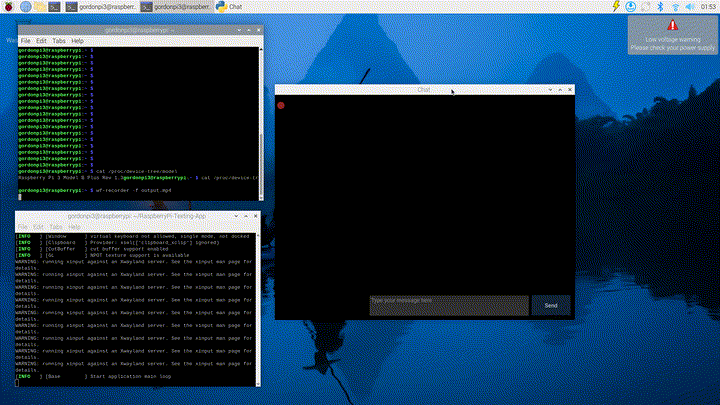Building a Multi-Protocol Texting App for Raspberry Pi
Welcome to the journey of creating a multi-protocol texting app for Raspberry Pi! This app bridges communication across devices using TCP/IP, UART, and more. In this post, we’ll explore the project’s development, challenges, and future plans.
Table of Contents
Project Overview
The Raspberry Pi Texting App enables seamless communication between devices using protocols like TCP/IP and UART. Designed for flexibility, this app can run on various Raspberry Pi models and PCs, making it a versatile tool for IoT, embedded systems, and robotics projects.
Features
- Multi-Protocol Support
- TCP/IP: Includes both master (server) and client modes.
- UART: Basic serial communication.
- User-Friendly Interface
- Built with Kivy, providing a responsive UI for protocol management and message handling.
- Message History
- Stores chat history in an SQLite database for retrieval and filtering.
- REST API
- Flask-based API for integrating with other services or applications.
Implementation Details
1. Protocol Handlers
-
TCP/IP Master and Client:
TheEthernetMasterHandlerandEthernetClientHandlermanage socket communication, handling multiple clients and message queues. -
UART Communication:
A simpleUARTHandlerfacilitates serial communication, supporting basicsendandreceiveoperations.
2. User Interface
The app uses Kivy for the UI, featuring:
- Protocol selection.
- Chat history display.
- Real-time message updates.
3. Database
SQLite powers the backend, storing messages with metadata like protocol, sender, and timestamps.
4. REST API
The Flask API enables:
- Adding new messages.
- Retrieving filtered chat history.
Demo GIFs
Here are some demos showcasing the app in action:
1. Laptop Ubuntu Environment

2. Raspberry Pi 400 (Master Server)

3. Raspberry Pi 3B+ (Client)

Challenges and Improvements
Challenges
- Performance on Raspberry Pi 3B+
- Rendering issues and slow performance on RPI OS GUI.
- Manual Configuration
- Requires manual edits to configure the server IP in
chatapp.py.
- Requires manual edits to configure the server IP in
Planned Improvements
- Raspberry Pi OS Lite
- Testing the app on RPI OS Lite for better performance on Pi 3B+.
- User-Defined Master Server IP
- Adding an input field for the user to specify the master server IP dynamically.
Future Plans
- Add More Protocols:
- Extend support to SPI, I2C, and CAN for IoT and robotics applications.
- Improve UI Performance:
- Optimize Kivy rendering for low-power devices like Raspberry Pi 3B+.
- Cloud Integration:
- Enable remote communication through a cloud-based API.
Conclusion
This project demonstrates how Raspberry Pi can serve as a flexible communication hub for IoT and embedded systems. Whether you’re connecting robots, sensors, or other devices, the Raspberry Pi Texting App provides a robust foundation for multi-protocol communication.
Stay tuned for updates and improvements! If you have questions or ideas for features, feel free to reach out.
Comments